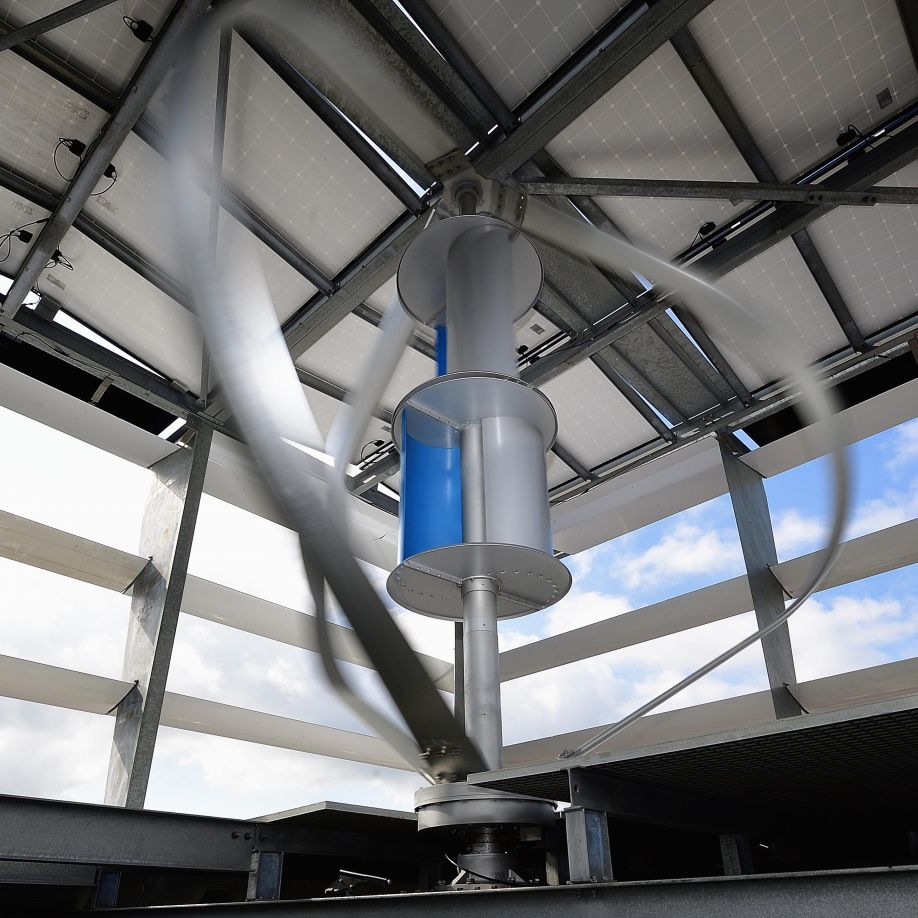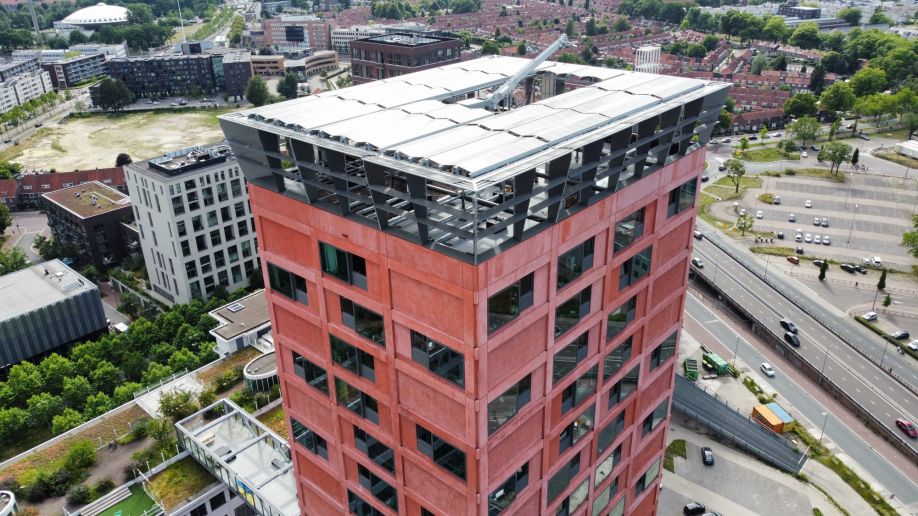PowerNEST is the only rooftop renewable energy system that can fully power a medium- to high-rise building. It’s a flowing kinetic sculpture of wind & solar tech, a stunning crown that provides on-site energy for buildings five stories or higher.
Renewable Energy Solution PowerNEST
Q&A with | IBIS Power
Tell us about IBIS Power and its story.
Dr Alexander Suma, founder and CEO, did his PhD at the University of Miami. As he was living there, he noticed how much energy in Miami is being used day in day out by all the air conditionings. Most of that energy is used in the growing number of medium to highrise buildings, and there was technically no way to supply these buildings with sufficient clean, decentral energy. That made him think, and he invented a super efficient wind and solar energy rooftop that generates 10x more energy than regular solar panels on roofs, which we call today PowerNEST. This was the first step on Alexander’s mission where he wants to save the same amount of CO2 annually used in Miami from 2030 every year by making medium and highrise building fully supply their own energy. Our last project is on the building HaasjeOver where we are already able to supply 85% of the electric energy of this 19 story high tower.
Explain what your PowerNEST Technology is.
PowerNEST is the modular rooftop renewable energy system that can fully power a medium- to high-rise building. It’s a flowing kinetic sculpture of wind & solar tech, a stunning crown that provides on-site energy for buildings five stories or higher.
Born from a need to bring sustainable power to urban environments, PowerNEST produces 6-10 x more energy than solar panels alone. It’s an on-site renewable energy system capable of fully powering medium- and high-rise buildings. The open-air layout of PowerNEST uses facade upflow and the Venturi.
Effect to silently increase wind speed over its turbine. Bi-facial arrangement of the solar canopy grabs more sunlight and wind keeps the panels naturally cool. The modular units of PowerNEST can easily arrange to fit available roof space and they can be customized to match a building’s style and local weather conditions. Plug-and-play storage and energy management systems are built in.
Can the system be easily retrofitted?
Yes, the weight can in almost all cases be easily carried by the existing building, and the modular set up is designed to fit most common sizes of building roofs.
Different modules that can be fitted on the roof depend on the size of the roof:
Corner Module, Mid Module, Solar Extension, Louvre Frame
Each module has a different weight depending on their size and whether they have an integrated wind turbine. A modular set up on a roof will result in an average weight of ±100-120 kg/m2
-
Corner Module 7.2m (23.6ft) 7.2m (23.6ft) 4.8m (15.7ft) 2; 9.7 t.kg (21,384 lbs)
-
Mid Module7.2m (23.6ft) 7.2m (23.6ft) 4.8m (15.7ft) 1; 7.5 t.kg (17,416 lbs)
-
Solar Extension7.2m (23.6ft) 3.6m (11.8ft) 4.8m (15.7ft) N/A; 1.4 t.kg (3,086 lbs)
What is the predicted lifetime and estimated ROI?
Turbines (parts) have a lifetime of 25 years, Solar panels 25 years, while the steel structure and cladding lasts at least 50 years.
The efficiency of the solar panels reduces over time by approximately 0,6% per year. By our maintenance plan, we offer to keep monitoring the outputs and offer replacements and upgrades. With the current developments of solar panels and wind turbines, PowerNEST can only get better.
PowerNEST as turn-key solution pays itself back within 7 to 12 years.
This mainly depends on:
-
Location with wind and solar availability
-
Local installation cost
-
Your current/future energy costs
-
Possible incentives and bookkeeping factors of the client can even further decrease the ROI.
How many kWh's can one PowerNEST produce?
This depends on several factors:
-
Local wind and solar availability (inland/coastal)
-
Building height
-
Building orientation
-
Roof shape
-
Obstructing factors in the area
-
Roof size and how many modules can fit
One Mid Module produces between 16.000 and 28.000 kWh/year depending on location.
With every project we acquire the best available solar panel. Currently this is a 430 Wp bi-facial.
How about the noise level and amount of vibration being generated by the PowerNEST?
- Noise level: meets the building code
- Average noise level < 43 dB
- Vibrations: Absorbed by dampers in the turbine, and for secondary safety between the columns and the main structure of the building.
The content & opinions in this article are the author’s and do not necessarily represent the views of AltEnergyMag
Comments (0)
This post does not have any comments. Be the first to leave a comment below.
Featured Product



